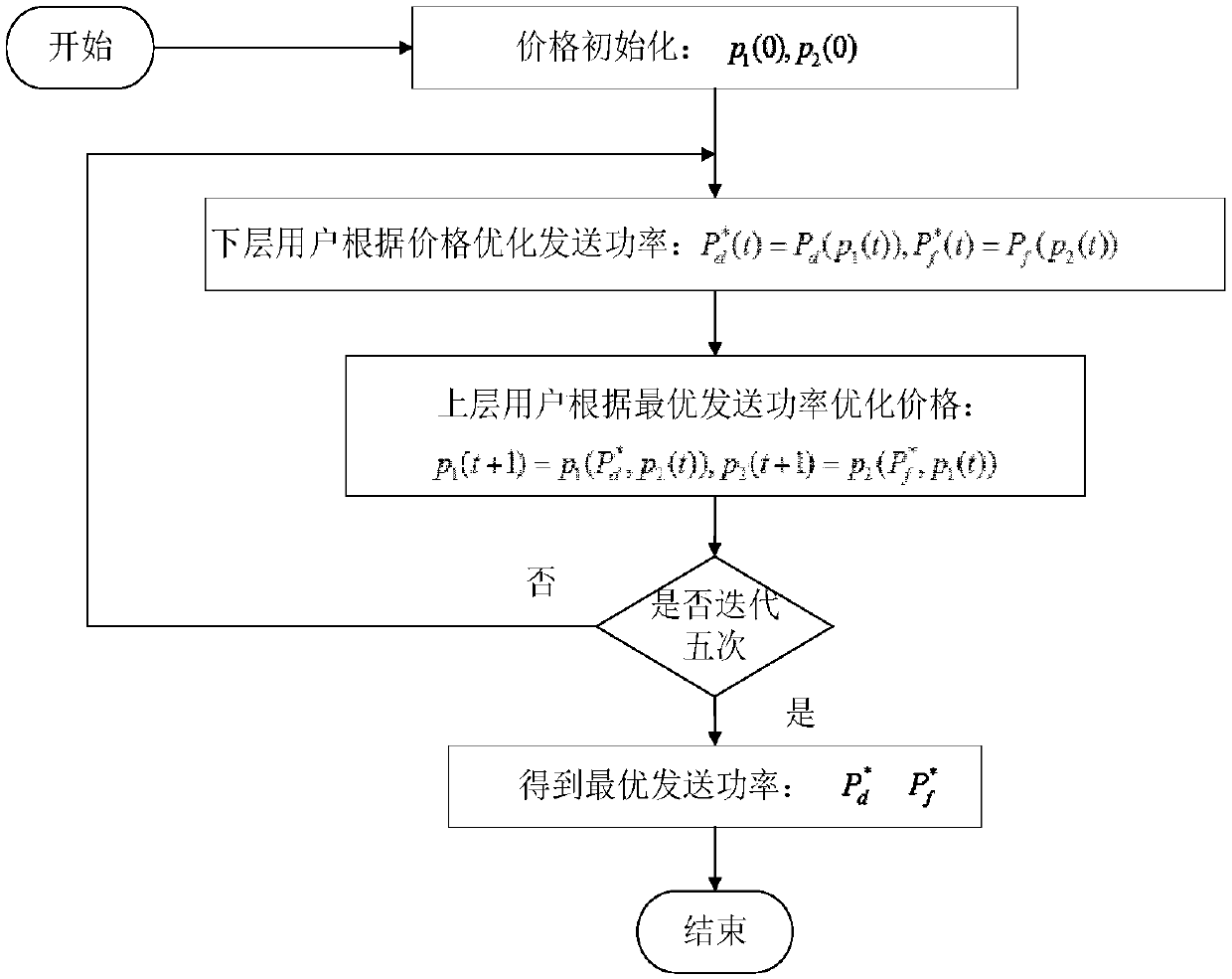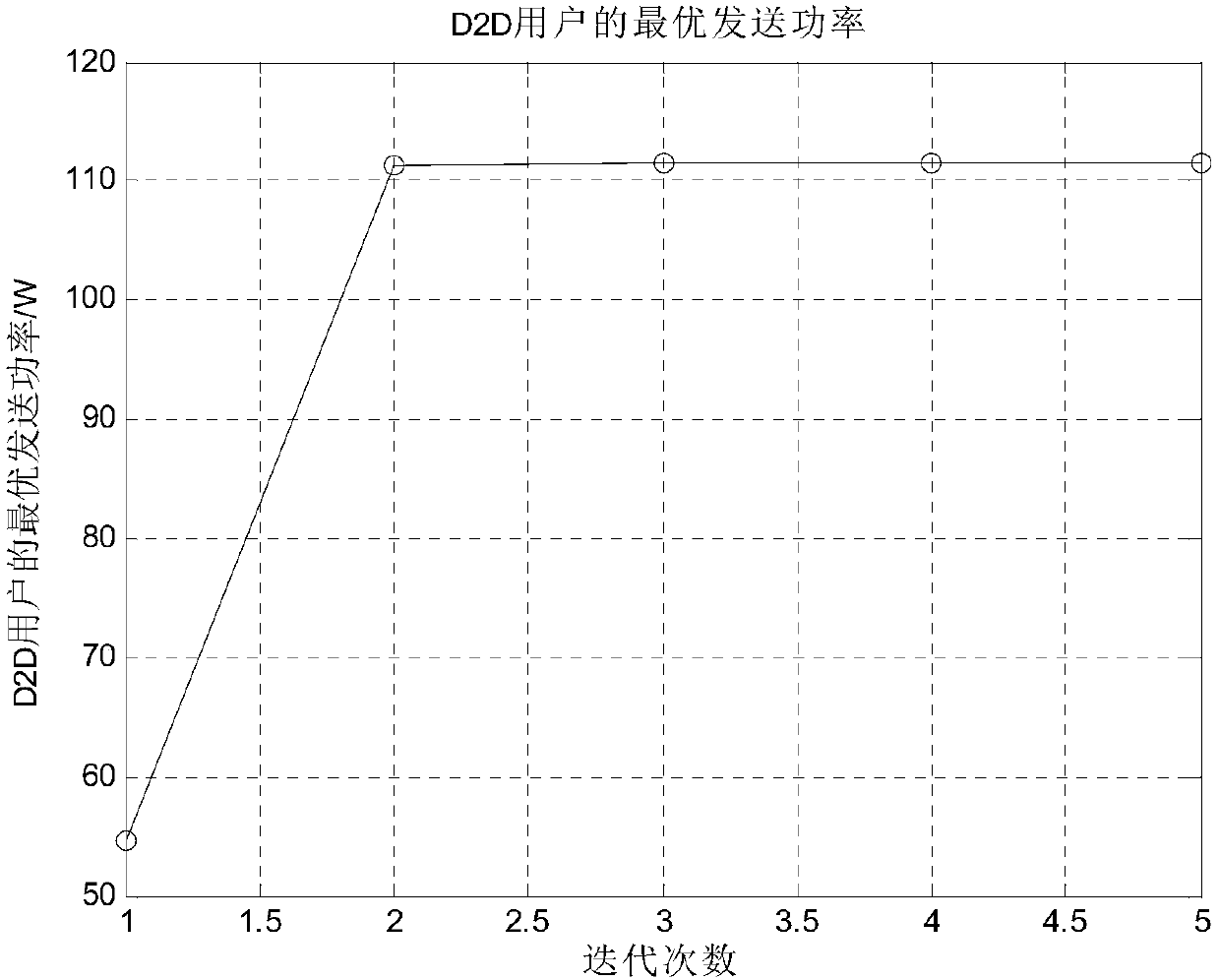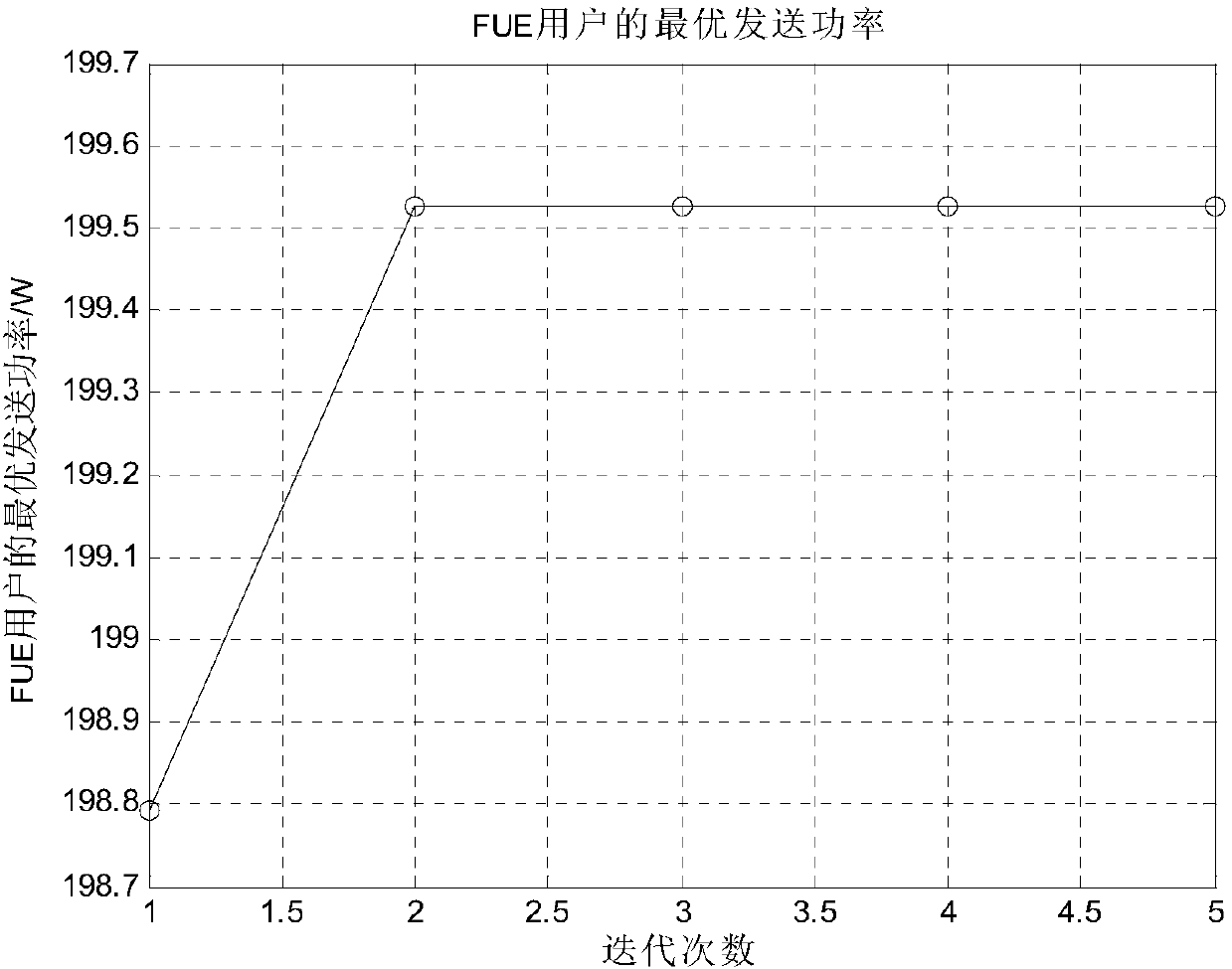D2D resource sharing method in heterogeneous cellular network
A technology of cellular network and resource sharing, applied in the field of D2D resource sharing based on Stackelberg game, can solve the problems of complexity and affect system performance, and achieve the effect of reducing power
- Summary
- Abstract
- Description
- Claims
- Application Information
AI Technical Summary
Problems solved by technology
Method used
Image
Examples
Embodiment 1
[0026] This embodiment is a D2D resource sharing method based on the Stackelberg game in a heterogeneous cellular network. The system noise is zero-mean additive white Gaussian noise with a spectral density of -174dBm / Hz. The channel model adopts a simplified path loss model. According to the 3GPP standard, The path loss formula for macro users and femtocell users is L d (dB)=128.1+37.6lg(d(km)), the path loss formula of the D2D link is L d (dB)=148+40lg(d(km)).
[0027] The D2D resource sharing method based on the Stackelberg game in the heterogeneous cellular network provided in this embodiment includes three steps: establishing a Stackelberg game model, analyzing the game process of the lower-layer users, and analyzing the game process of the upper-layer users. The specific steps are as follows:
[0028] The first step is to establish the Stackelberg game model
[0029] Set macrocell users as upper-tier users, and femtocell users and D2D users as lower-tier users. During ...
PUM
 Login to View More
Login to View More Abstract
Description
Claims
Application Information
 Login to View More
Login to View More - R&D
- Intellectual Property
- Life Sciences
- Materials
- Tech Scout
- Unparalleled Data Quality
- Higher Quality Content
- 60% Fewer Hallucinations
Browse by: Latest US Patents, China's latest patents, Technical Efficacy Thesaurus, Application Domain, Technology Topic, Popular Technical Reports.
© 2025 PatSnap. All rights reserved.Legal|Privacy policy|Modern Slavery Act Transparency Statement|Sitemap|About US| Contact US: help@patsnap.com



